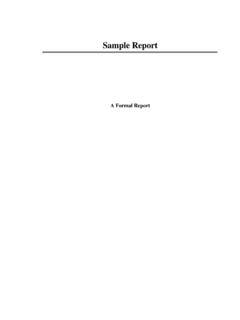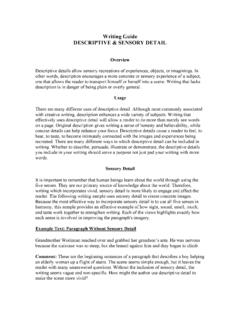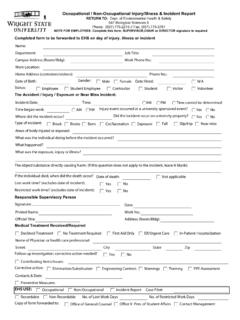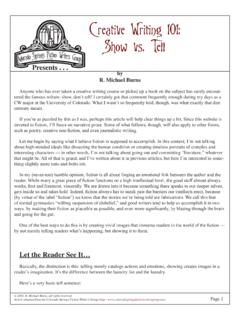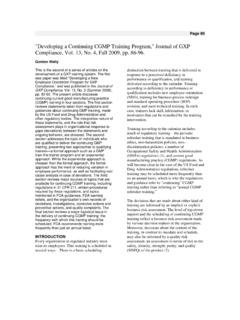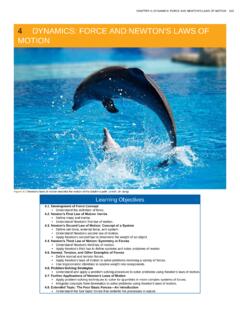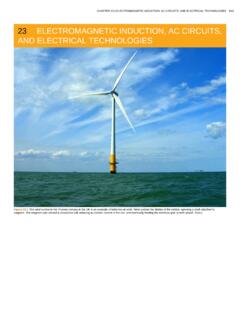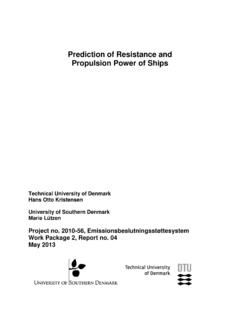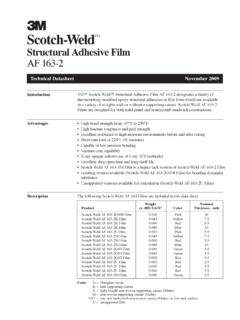Transcription of 20 ELECTRIC CURRENT, RESISTANCE, AND OHM'S LAW
1 20 ELECTRIC CURRENT, resistance , AND OHM'SLAWF igure energy in massive quantities is transmitted from this hydroelectric facility, the Srisailam power station located along the Krishna River in India, by themovement of charge that is, by ELECTRIC current. (credit: Chintohere, Wikimedia Commons)CHAPTER 20 | ELECTRIC CURRENT, resistance , AND OHM'S LAW 695 Learning Current Define ELECTRIC current, ampere, and drift velocity Describe the direction of charge flow in conventional current. Use drift velocity to calculate current and vice Ohm s Law: resistance and Simple Circuits Explain the origin of Ohm s law.
2 Calculate voltages, currents, or resistances with Ohm s law. Explain what an ohmic material is. Describe a simple resistance and Resistivity Explain the concept of resistivity. Use resistivity to calculate the resistance of specified configurations of material. Use the thermal coefficient of resistivity to calculate the change of resistance with ELECTRIC Power and Energy Calculate the power dissipated by a resistor and power supplied by a power supply. Calculate the cost of electricity under various Alternating Current versus Direct Current Explain the differences and similarities between AC and DC current.
3 Calculate rms voltage, current, and average power. Explain why AC current is used for power ELECTRIC Hazards and the Human Body Define thermal hazard, shock hazard, and short circuit. Explain what effects various levels of current have on the human Nerve Conduction Electrocardiograms Explain the process by which ELECTRIC signals are transmitted along a neuron. Explain the effects myelin sheaths have on signal propagation. Explain what the features of an ECG signal to ELECTRIC Current, resistance , and OHM'S LawThe flicker of numbers on a handheld calculator, nerve impulses carrying signals of vision to the brain, an ultrasound device sending a signal to acomputer screen, the brain sending a message for a baby to twitch its toes, an ELECTRIC train pulling its load over a mountain pass, a hydroelectricplant sending energy to metropolitan and rural users these and many other examples of electricity involveelectric current, the movement of has indeed harnessed electricity, the basis of technology.
4 To improve our quality of life. Whereas the previous two chapters concentratedon static electricity and the fundamental force underlying its behavior, the next few chapters will be devoted to ELECTRIC and magnetic phenomenainvolving current. In addition to exploring applications of electricity, we shall gain new insights into nature in particular, the fact that all magnetismresults from ELECTRIC CurrentElectric CurrentElectric current is defined to be the rate at which charge flows. A large current, such as that used to start a truck engine, moves a large amount ofcharge in a small time, whereas a small current, such as that used to operate a hand-held calculator, moves a small amount of charge over a longperiod of time.
5 In equation form, ELECTRIC currentIis defined to be( )I= Q t,where Qis the amount of charge passing through a given area in time t. (As in previous chapters, initial time is often taken to be zero, in whichcase t=t.) (SeeFigure ) The SI unit for current is theampere(A), named for the French physicist Andr -Marie Amp re (1775 1836). SinceI= Q/ t, we see that an ampere is one coulomb per second:( )1 A = 1 C/sNot only are fuses and circuit breakers rated in amperes (or amps), so are many electrical rate of flow of charge is current. An ampere is the flow of one coulomb through an area in one CHAPTER 20 | ELECTRIC CURRENT, resistance , AND OHM'S LAWThis content is available for free at Calculating Currents: Current in a Truck Battery and a Handheld Calculator(a) What is the current involved when a truck battery sets in motion 720 C of charge in s while starting an engine?
6 (b) How long does it C of charge to flow through a handheld calculator if a current is flowing?StrategyWe can use the definition of current in the equationI= Q/ tto find the current in part (a), since charge and time are given. In part (b), werearrange the definition of current and use the given values of charge and current to find the time for (a)Entering the given values for charge and time into the definition of current gives( )I= Q t=720 s= 180 C/s= 180 for (a)This large value for current illustrates the fact that a large charge is moved in a small amount of time. The currents in these starter motors arefairly large because large frictional forces need to be overcome when setting something in for (b)Solving the relationshipI= Q/ tfor time t, and entering the known values for charge and current gives( ) t= QI= 10-3C/s= for (b)This time is slightly less than an hour.
7 The small current used by the hand-held calculator takes a much longer time to move a smaller chargethan the large current of the truck starter. So why can we operate our calculators only seconds after turning them on? It s because calculatorsrequire very little energy. Such small current and energy demands allow handheld calculators to operate from solar cells or to get many hours ofuse out of small batteries. Remember, calculators do not have moving parts in the same way that a truck engine has with cylinders and pistons,so the technology requires smaller a simple circuit and the standard schematic representation of a battery, conducting path, and load (a resistor).
8 Schematics arevery useful in visualizing the main features of a circuit. A single schematic can represent a wide variety of situations. The schematic inFigure (b), for example, can represent anything from a truck battery connected to a headlight lighting the street in front of the truck to a small batteryconnected to a penlight lighting a keyhole in a door. Such schematics are useful because the analysis is the same for a wide variety of situations. Weneed to understand a few schematics to apply the concepts and analysis to many more (a) A simple ELECTRIC circuit. A closed path for current to flow through is supplied by conducting wires connecting a load to the terminals of a battery.
9 (b) In thisschematic, the battery is represented by the two parallel red lines, conducting wires are shown as straight lines, and the zigzag represents the load. The schematic representsa wide variety of similar that the direction of current flow inFigure from positive to direction of conventional current is the direction that positivecharge would flow. Depending on the situation, positive charges, negative charges, or both may move. In metal wires, for example, current is carriedCHAPTER 20 | ELECTRIC CURRENT, resistance , AND OHM'S LAW 697by electrons that is, negative charges move. In ionic solutions, such as salt water, both positive and negative charges move.
10 This is also true innerve cells. A Van de Graaff generator used for nuclear research can produce a current of pure positive charges, such as the movement of charged particles that compose a current. The fact that conventional current is taken to be in the direction that positivecharge would flow can be traced back to American politician and scientist Benjamin Franklin in the 1700s. He named the type of charge associatedwith electrons negative, long before they were known to carry current in so many situations. Franklin, in fact, was totally unaware of the small-scalestructure of is important to realize that there is an ELECTRIC field in conductors responsible for producing the current, as illustrated inFigure Unlike staticelectricity, where a conductor in equilibrium cannot have an ELECTRIC field in it, conductors carrying a current have an ELECTRIC field and are not in staticequilibrium.

